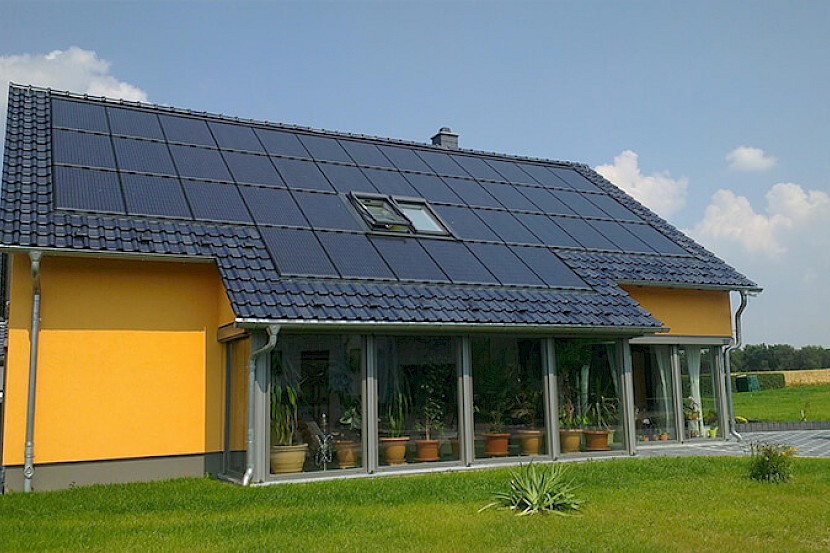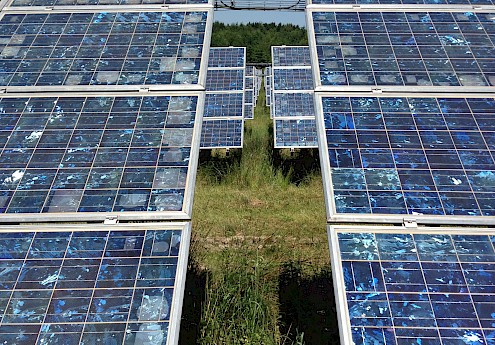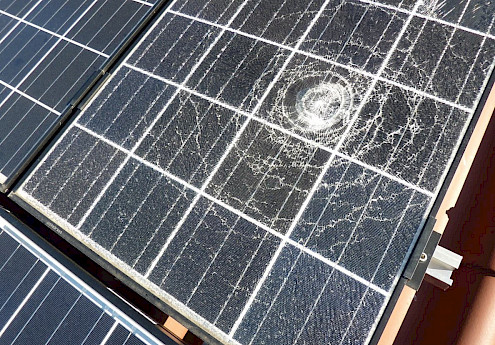
The solar module – the heart of the photovoltaic system
A modern photovoltaic system consists of a number of batteries, inverters, controllers and other components, each with its own important function. But at the heart of every photovoltaic system are the solar cells in a solar module. These elements are responsible for storing and converting solar energy into electrical energy. A solar module is a photoelectric generator whose functionality is based on physical semiconductors. Electrons are released by irradiation with light and close the electrical circuit. In order to generate the required voltage, the solar modules are paralleled or connected in series.
Historical development of photovoltaic modules
The actual history of photovoltaics began in 1839 with the discovery of the photoelectric effect by Alexander Edmond Bequerel. Since then, mankind has known that light can generate electricity. It was not until Albert Einstein was able to physically describe the photoelectric effect in 1905 by discovering the light quantum effect that people actually began to use solar energy for various processes. However, the first solar modules were only developed in 1954 and had an efficiency of just 4%. Scientists later succeeded in increasing the efficiency to an industrial level of 15%. Today's solar modules usually have an efficiency of up to 40%.
The first solar panels were used to power the artificial earth satellites. Later, the PV modules were mainly used in peripheral areas, small villages and towns. For decades, they supplied radio and transmission masts with energy. Thanks to progressive technological development, more and more models were also developed for private purposes. House and property owners are now able to use solar modules as an energy source.
Different PV modules in use
The various solar modules on the market differ in particular in the following of their properties:
- size
- carrier material
- efficiency
- rated power and max power
- thermal behavior
- longevity
Solar modules with solar cells made of the carrier material silicon are used most frequently. Depending on the type of production, a distinction is made between polycrystalline and monocrystalline modules.
Structure of a crystalline solar module


Polycrystalline solar modules
Polycrystalline solar cells are made by sawing blocks of silicon after melting them. They are then no longer processed and are therefore cheaper to produce. The efficiency of PV modules made from polycrystalline solar cells is between 12 and 16%. Due to their optimal price-performance ratio, polycrystalline solar modules are particularly suitable for large-scale systems.
Monocrystalline solar modules
The efficiency of monocrystalline PV modules is higher than that of polycrystalline ones and is between 14 and 18%. This is mainly due to the more extensive processing of the individual solar cells, which also entails large price differences. Solar power from monocrystalline solar modules is significantly more expensive, which is why this technology is only used for more complex projects.
Thin-film modules
Thin-film modules or amorphous solar modules are particularly cheap because their solar cells are made from silicon or compound semiconductors with very little effort. However, the efficiency of these photovoltaic modules is only 10 to 12%, which is partially compensated for by the fact that the modules are light and flexible in use. However, in recent years there have been significant improvements in the performance of thin-film modules. Thanks to optimized manufacturing methods and improved material quality, an efficiency of up to 25% has now been achieved.
Hybrid solarmodules
The future of solar power lies in so-called hybrid solar modules, which are made from a combination of organic polymers and inorganic materials. Thanks to their flexibility, low weight and low manufacturing costs, they are ideal for universal applications. Their production is not as complex as with monocrystalline modules, which makes them significantly cheaper. The efficiency of these innovative modules is a remarkable 40%.
The pros and cons of solar power
The main disadvantages of today's solar modules are (still) relatively low efficiencies compared to other power sources and a comparatively unfavorable price-performance ratio. In addition, there are high maintenance costs for all components and lower efficiency in bad weather conditions. However, it should be remembered above all that the investment in solar power is of a long-term nature.
The main advantages are the longevity and inexhaustibility of the power source. Generating electricity itself is very inexpensive. Such technologies are also particularly environmentally friendly and noiseless, which is why their use is supported by funding programs from the European Union. If you want to invest in good solar modules for your system, you will find a large selection of modules at SecondSol.




